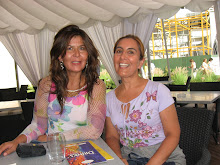
Assignment #3: Post-Modernist Literature
Heart of Darkness (Victorian Literature, Joseph Conrad)
It is a novella written by Joseph Conrad and it is widely regarded as a significant work of English Literature. It exposes the dark side of European Colonization while exploring the three levels of darkness that the protagonist, Marlow, encounters: 1)The darkness of the Congo wilderness; 2)The darkness of the Europeans´cruel treatment of the natives; 3)and the unfathomable darkness within every human being for committing heinous acts of evil.
There was spiritual darkness of several characters in this work, this sense of darkness also lends itself to a related theme of obscurity again, in various senses, reflecting the ambiguities in the work. Morality is ambiguous, that which is traditionally placed on the side of light is in darkness and vice versa.
It is a good example of Victorian Literature because the central themes were: 1.- The Hypocrisy of Imperialism 2.- Madness as a Result of Imperialism 3.-The Absurdity of Evil and at those times it was Good or Bad, God or Evil, Lightness or Darkness, it was no middle point in between them.
The Russia House (Post Modern Literature, John le Carré, 1989)
While Post Modernist Era live a process of absolute and total reevaluation and reappraisal of culture, history, identity and language. It had a good impact on Literature because all kind of themes are treated in Post Modern Literature producing a total explosion of colors as the least, emotions, suffering, happiness, death and life. The Russia House is a novel by Jon le Carré published in 1989. The title refers to the nickname given to the portion of the British Secret Intelligence Service that was devoted to spying on the Soviet Union.
The philosophical Barley Blair (protagonist, a middle-aged and heavy-drinking head of a modest family owned British publishing Company) reasons that governments are not the only ones who can manipulate and betray, and some things are more important than the games that spies play with others´lives. (Spy novel). Here we see distrust on theories and ideologies together with a complete rejection of conventional thinking in Post Modern Era.
“The Murders in the Rue Morgue”( Allan Poe, USA, 1841-short story) Victorian Literature
In this short story the themes explored by the author were isolation/alienation, lack of communication, pessimism/despair, loss of faith which were central Victorian themes at that time. “The Murders in the Rue Morgue” introduces a new genre of short fiction to American literature: the detective story. The detective story emerged from Poe’s long-standing interest in mind games, puzzles, and secret codes called cryptographs, which Poe regularly published and decoded in the pages of the Southern Literary Messenger. He would dare his readers to submit a code he could not decipher. More commonly, though, Poe created fake personalities who would send in puzzles that he solved. “The Murders in the Rue Morgue,” along with the later story “The Purloined Letter,” allows Poe to sustain a longer narrative in which he presents seemingly unsolvable conundrums that his hero, M. Auguste Dupin, can always ultimately master. Dupin becomes a stand-in for Poe, who constructs and solves an elaborate cryptograph in the form of a bizarre murder case.
Animals In Poe’s murder stories, homicide requires animalistic element. Animals kill, they die, and animal imagery provokes and informs crimes committed between men. Animals signal the absence of human reason and morality, but sometimes humans prove less rational than their beastly counterparts. The joke behind “The Murders in the Rue Morgue” is that the Ourang-Outang did it. The savage irrationality of the crime baffles the police, who cannot conceive of a motiveless crime or fathom the brute force involved.
“The Secret Pilgrim” (J. le Carré, Spy Novel, United Kingdom, 1990)
The Secret Pilgrim is a 1990 novel, set within the frame narrative of a series of lectures by John le Carré's George Smiley, famous only within the 'Circus'. The memoirs, narrated by Ned, a former pupil of Smiley's, are, except for the last, triggered by tangential Smiley comments in lectures given at Sarratt, the spy-training college which Ned runs. However, they are primarily accounts of Ned's own experiences rather than of Smiley's. Ned, who does not give his surname, represents himself as the head of the Russia House in The Russia House, disgraced by the defection of Barley Blair and hence condemned to a semi-retirement in charge of Sarratt. In many senses the Secret Pilgrim is a collection of short stories, tied together as Ned's recollection. Many of them are recognisable anecdotes or urban legends within the British Intelligence community.
The Secret Pilgrim examines how people behave under extreme stress (pushing things to the limit). The most dramatic of these episodes is the one in which Ned is tortured by Polish agents. With all his courage he resists giving them what they want. He is beaten and loses teeth; he is tied to a rack and worked over.

